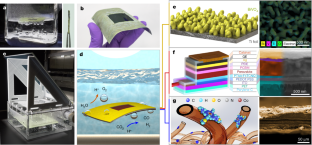2022-08-16 スウェーデン・リンショーピング大学
未知の物質や分子が存在する、いわゆる「化学空間」は、宇宙空間と同じくらい広く、未開拓の場所であると言える。そのため、これまで知られていなかった物質を発見するための方法を開発することには、十分な理由がある。リンショーピン大学とケンブリッジ大学の研究者らは、化学空間を従来よりも大規模にマッピングできる機械学習法を開発した。
このAIモデルは、原子がどこに座っているかの対称性を記述するため、興味深い可能性を探ることが容易になる。
30万以上の材料を使ってモデルを訓練し、原子が新しい対称的な方法で配置された、これまで知られていなかった材料を提案できるようにした。
この新しい方法を使えば、研究室で製造する必要がなく、AIを使って新しい結晶構造の物質の新しい組み合わせを予測することができる。これにより、材料の設計と開発をスピードアップすることができます。こうすることで、研究者は、たとえばバッテリーや太陽電池の開発など、潜在的な新材料を開発することができる。
<関連情報>
- https://liu.se/en/news-item/ny-ai-modell-ska-hitta-tidigare-okanda-material
- https://www.science.org/doi/10.1126/sciadv.abn4117
座標フリー粗視化法による安定物質の迅速な探索 Rapid discovery of stable materials by coordinate-free coarse graining
Rhys E. A. Goodall ,Abhijith S. Parackal ,Felix A. Faber ,Rickard Armiento,Alpha A. Lee
Science Advances Published:27 Jul 2022
DOI: 10.1126/sciadv.abn4117

Abstract
A fundamental challenge in materials science pertains to elucidating the relationship between stoichiometry, stability, structure, and property. Recent advances have shown that machine learning can be used to learn such relationships, allowing the stability and functional properties of materials to be accurately predicted. However, most of these approaches use atomic coordinates as input and are thus bottlenecked by crystal structure identification when investigating previously unidentified materials. Our approach solves this bottleneck by coarse-graining the infinite search space of atomic coordinates into a combinatorially enumerable search space. The key idea is to use Wyckoff representations, coordinate-free sets of symmetry-related positions in a crystal, as the input to a machine learning model. Our model demonstrates exceptionally high precision in finding unknown theoretically stable materials, identifying 1569 materials that lie below the known convex hull of previously calculated materials from just 5675 ab initio calculations. Our approach opens up fundamental advances in computational materials discovery.



